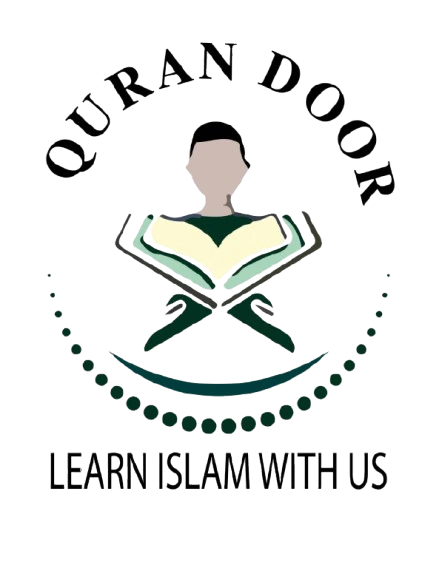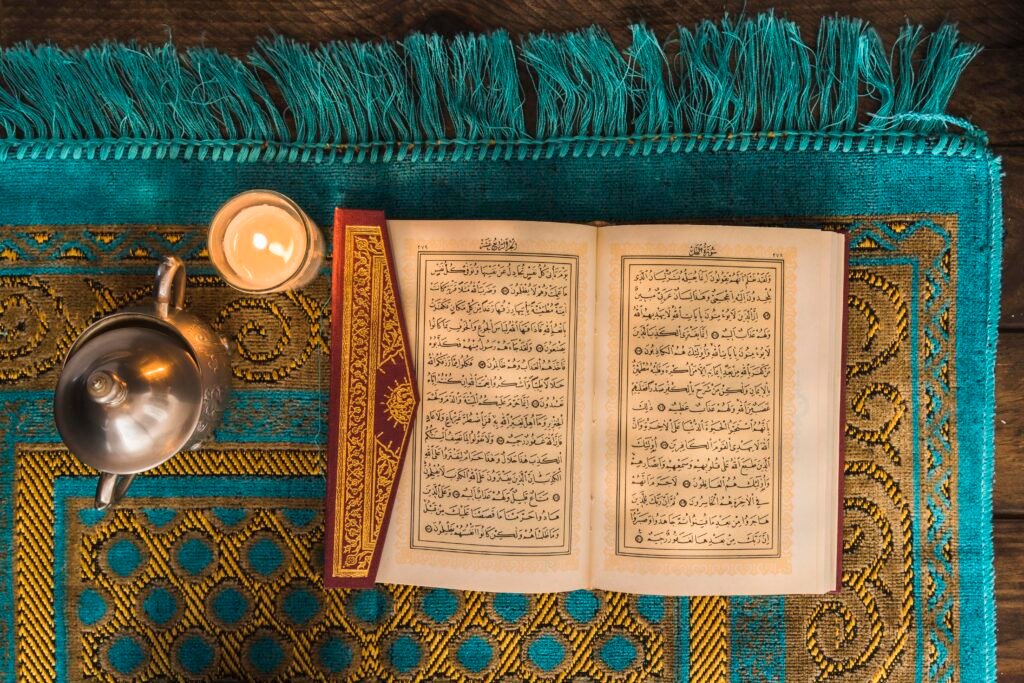A. Meaning of “Quran” in Arabic
The Significance of the Word “Quran”
The term “Quran” holds deep meaning in the Arabic language, extending beyond merely being the title of Islam’s holy book.
Originating from the root word “qara’a,” which means “to read” or “to recite”. “Quran” translates to “the recitation” or “that which is read aloud”.
This etymology highlights the Quran’s oral tradition, reflecting how it was originally transmitted and preserved.
The linguistic richness of the word “Quran” extends beyond its basic meaning. It also carries connotations of:
1. Gathering or collecting: Symbolizing the compilation of divine revelations
2. Conveying or imparting: Representing the transmission of God’s message to humanity
3. Reciting or proclaiming: Emphasizing the importance of verbal recitation in Islamic practice
This multifaceted meaning underscores the Quran’s role not just as a text to be read
But as a living, dynamic source of guidance to be recited, internalized, and implemented in daily life.
B. The Quran’s role in Islam
The Quran occupies a central and unparalleled position in Islam. serving as the primary source of religious guidance and law for over 1.8 billion Muslims worldwide. Quran’s significance in Islamic theology and practice cannot be overstated. Here are some key aspects of the Quran’s role in Islam:
1. Divine Revelation: Muslims believe the Quran to be the literal word of God (Allah), revealed to the Prophet Muhammad through the angel Gabriel over a period of 23 years. This belief in divine authorship gives the Quran supreme authority in matters of faith and practice.
2. Doctrinal Foundation: The Quran establishes the core tenets of Islamic belief, including:
• Monotheism (Tawhid)
• Prophethood (Risalah)
• The Day of Judgment (Yawm al-Qiyamah)
• Divine predestination (Qadar)
1. Moral and Ethical Guide:
It provides a comprehensive framework for moral and ethical conduct, covering personal, social, and spiritual aspects of life.
1. Legal Source:
The Quran serves as the primary source of Islamic law (Sharia). Supplemented by the Hadith (sayings and actions of Prophet Muhammad) and scholarly consensus.
1. Spiritual Nourishment:
Regular recitation and contemplation of the Quran are considered acts of worship and a means of spiritual growth.
1. Linguistic Miracle:
The Quran’s eloquence and literary style are regarded by Muslims as miraculous, challenging any human attempt at imitation.
1. Historical Record: It contains accounts of past prophets, nations, and events, offering lessons and warnings for contemporary readers.
2. Scientific Insights:
Many Muslims believe the Quran contains scientific facts that were unknown at the time of its revelation. viewing this as evidence of its divine origin.
The following table illustrates the multifaceted role of the Quran in Islamic life:
| Aspect
| Role of the Quran
|
| Belief
| Source of doctrinal teachings
|
| Practice
| Guide for rituals and worship
|
| Ethics
| Framework for moral conduct
|
| Law
| Primary source of Islamic jurisprudence
|
| Spirituality
| Tool for personal growth and connection with God
|
| Education
| Core subject in Islamic curriculum
|
| Culture | Influence on art, literature, and social norms
|
Understanding the historical context in which the Quran was revealed is crucial for appreciating its message and impact. The revelation of the Quran took place in the 7th century CE.
a period marked by significant social, political, and religious developments in the Arabian Peninsula and beyond.
1. Pre-Islamic Arabia (Jahiliyyah):
• Polytheistic society with tribal structure
• Limited central authority and frequent inter-tribal conflicts
• Presence of Jewish and Christian communities
• Mecca as a center of trade and pilgrimage
1. Life of Prophet Muhammad:
• Born in Mecca around 570 CE
• Received first revelation at age 40 (610 CE) in the Cave of Hira
• Preached in Mecca for 13 years, facing opposition
• Migrated to Medina in 622 CE (Hijra), marking the beginning of the Islamic calendar
• Established the first Islamic state in Medina
• Continued to receive revelations until his death in 632 CE
1. Gradual Revelation:
• The Quran was revealed piecemeal over 23 years (610-632 CE)
• Revelations addressed immediate concerns and provided guidance for the growing Muslim community
• Early Meccan surahs focus on monotheism, accountability, and spiritual purification
• Later Medinan surahs emphasize social, legal, and political aspects of the Islamic system
1. Socio-Political Context:
• Transition from tribal society to a unified community (Ummah)
• Establishment of new social norms and legal framework
• Interactions with other religious communities (Jews, Christians, pagans)
• Expansion of Muslim influence beyond Arabia
1. Cultural and Linguistic Environment:
• Rich oral tradition of poetry and storytelling
• Diversity of Arabic dialects
• Influence of surrounding civilizations (Persian, Byzantine, Ethiopian)
The historical context of the Quran’s revelation is crucial for several reasons:
1. It provides a framework for understanding specific verses and their applications.
2. It demonstrates the Quran’s relevance to real-world situations and challenges.
3. It illustrates the gradual development of Islamic teachings and practices.
4. It helps in distinguishing between universal principles and context-specific rulings.
To further illustrate the impact of historical context on the Quran’s revelation, consider the following table:
| Period
| Major Themes
| Historical Context
|
| Early Meccan
| Monotheism, Day of Judgment, moral reform
| Polytheistic society, resistance to new faith
|
| Middle Meccan
| Stories of previous prophets, arguments against polytheism
| Growing opposition, seeking consolation and examples
|
| Late Meccan
| Challenges to opponents, affirmation of Muhammad’s prophethood
| Intense persecution, preparation for migration
|
| Early Medinan
| Community organization, relations with other faiths
| Establishment of first Islamic state, diverse population
|
| Late Medinan
| Legislation, guidance for expanding Muslim community
| Military conflicts, diplomatic relations, consolidation of Islamic teachings
|
The historical context of the Quran’s revelation not only enriches our understanding of its content. But also highlights its dynamic nature in addressing the evolving needs of the early Muslim community.
This context continues to inform contemporary interpretations and applications of Quranic teachings. demonstrating its enduring relevance across time and cultures.
As we delve deeper into the Quran’s structure and content in the next section. keep in mind how this historical backdrop shaped the form and substance of Islam’s holy book.
The interplay between divine revelation and human circumstances created a text. that is both timeless in its principles and intimately connected to the lived experiences of its first recipients.

